Kitchen Knife Sharpening in Bay Area
Gone are the days when sharpening your knives was a tedious and often-overlooked chore. When dull knives made cooking a challenge, sharpening them was something you’d put off. Now, with our service, keeping your knives sharp is as easy as clicking a button.
At Rejuvenated Knives, we bring the traditional craft of knife sharpening into the 21st century by reviving the old-world charm of door-to-door service. No more driving across Palo Alto or the peninsula to find a sharpening service. With just a few clicks, you can order our service, and we’ll pick up your knives within 30 minutes.
Our door-to-door sharpening service caters to all your kitchen knives, tools, and gardening instruments. We guarantee a professional sharpening experience delivered right to your home. Think of us as the Amazon of knife sharpening.
Our Knife Sharpening Services
Types of Knives We Sharpen
We handle a wide range of knives and kitchen tools, including:
Chef's Knife:
The versatile chef's knife is a staple in every kitchen, perfect for chopping, slicing, and dicing a wide range of ingredients with precision and ease.
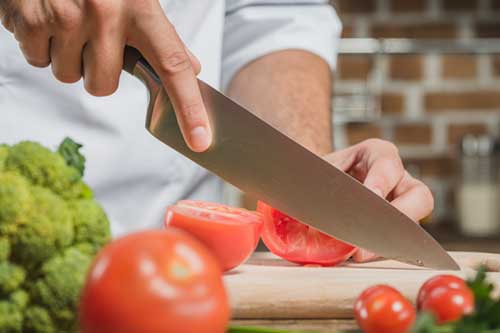
Paring Knife:
This small, nimble knife excels at intricate tasks like peeling, trimming, and shaping fruits and vegetables, offering excellent control and accuracy.
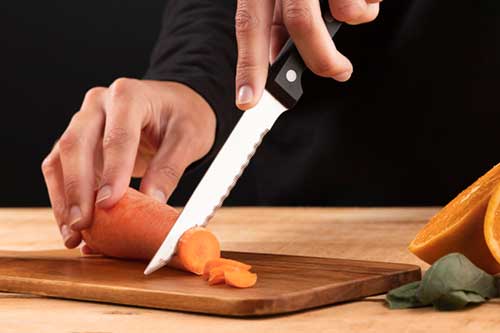
Santoku Knife:
With its slightly curved edge and grant on sides, the Santoku knife is ideal for slicing, dicing, and mincing, especially for delicate tasks like thinly slicing fish or vegetables.
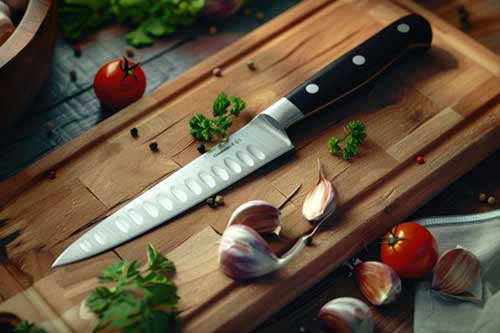
Bread Knife:
The serrated edge of a bread knife effortlessly slices through crusty loaves and soft bread without crushing, ensuring clean and uniform cuts.
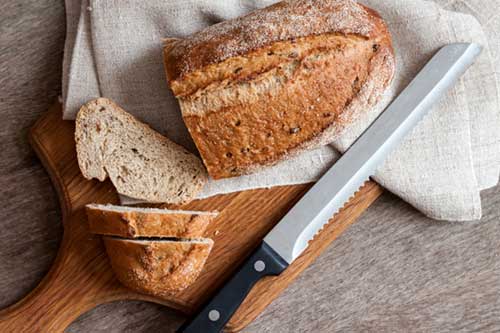
Boning Knife:
This narrow, flexible knife is specifically designed for deboning meat and poultry, making it easy to work around bones and joints with precision.
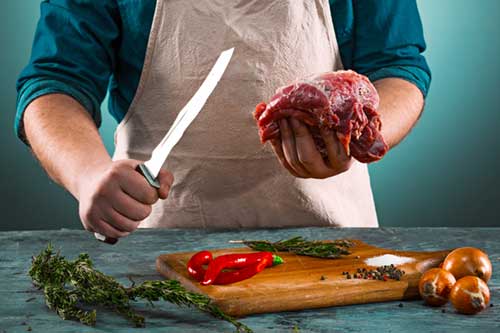
Utility Knife:
Larger than a paring knife but smaller than a chef's knife, the utility knife is perfect for a variety of everyday tasks, from slicing sandwiches to cutting small vegetables.
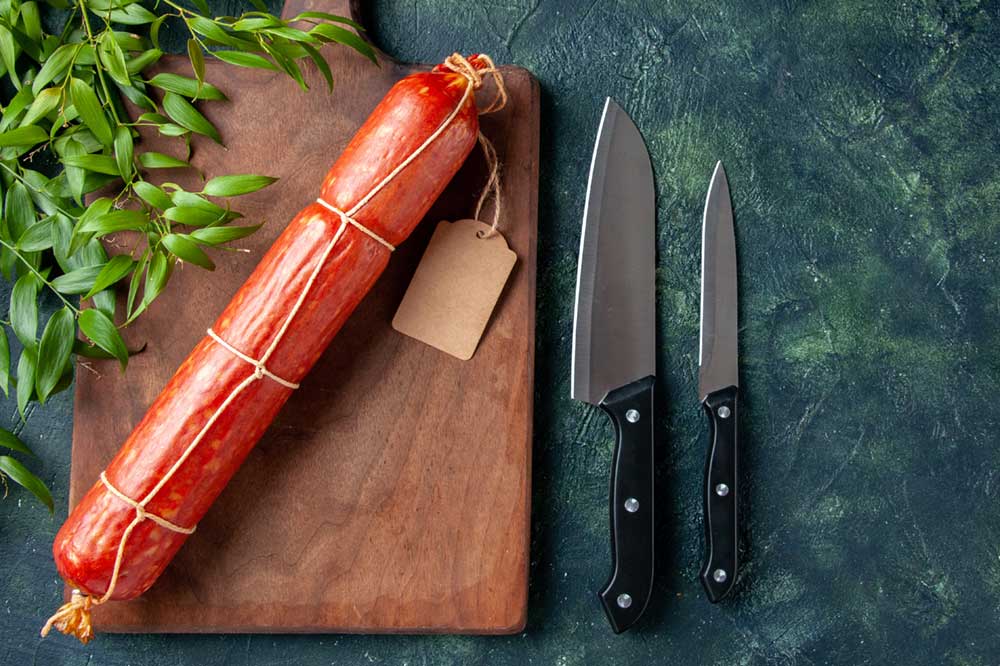
Carving Knife:
With its long, slender blade, the carving knife is designed to create smooth, even slices of cooked meats, poultry, and roasts.
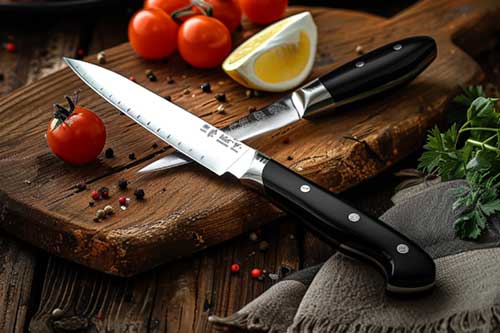
Cleaver:
The cleaver's heavy, broad blade makes it perfect for chopping through tough cuts of meat, bones, and dense vegetables, offering power and durability.
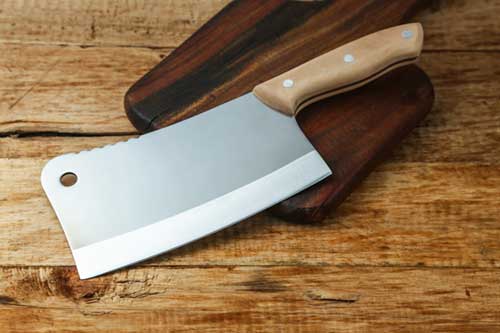
Pocket Knives:
Versatile and portable, pocket knives are great for a variety of tasks, from outdoor activities to precise cutting in the kitchen, with blades that fold neatly into the handle.
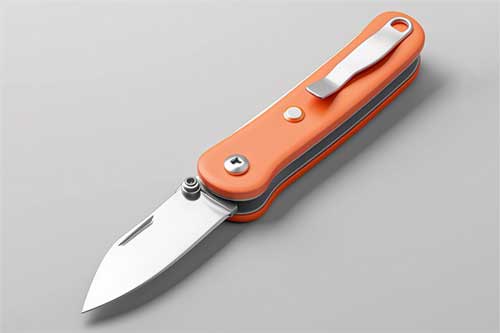
Serrated and Scalloped Knives:
These knives are specially designed to tackle tough exteriors like crusty bread or delicate items like tomatoes, offering controlled cutting with minimal tearing.
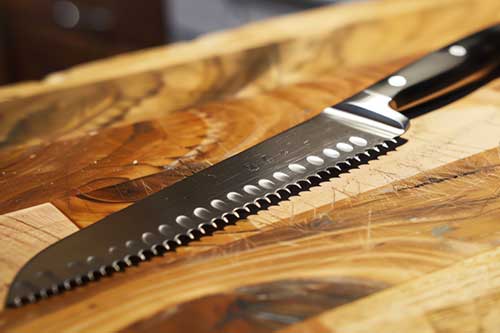
Poultry Shears:
These heavy-duty scissors are designed for cutting through poultry bones and joints, making it easy to break down whole birds with precision and strength.
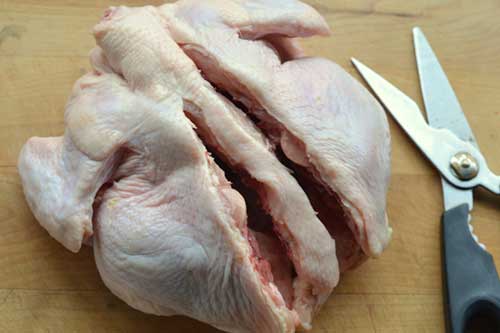
Mandoline Blades:
The sharp, adjustable blades of a mandoline slicer allow for quick and uniform slicing of fruits and vegetables, offering a range of thicknesses for different culinary needs.

Peelers:
Essential for removing the outer skin of fruits and vegetables, peelers come in various designs and are crafted for efficient, smooth, and safe peeling.
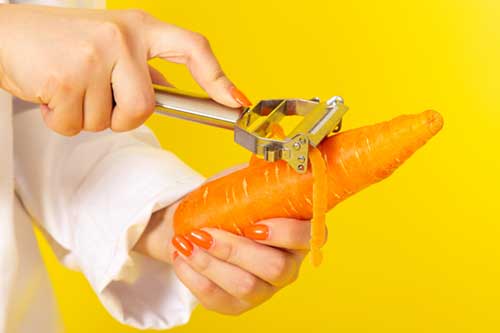
Signs Your Knives Need Sharpening
If your knives aren’t cutting as smoothly as they used to, it’s time for sharpening. Signs include decreased cutting performance, needing more effort to cut, visible nicks or chips on the blade, and a dull or rounded edge.
Keeping your kitchen knives sharp is essential for safe and efficient cooking. A dull knife requires more force, which not only makes cutting more difficult but also increases the risk of accidents. But how do you know when it’s time to sharpen your knives? Here are some telltale signs and tests to help you determine when your blades need a touch-up.
1. Increased Effort Required
One of the first signs that your knife is losing its edge is when you find yourself using more force than usual to cut through food. A sharp knife should glide through ingredients with minimal pressure. If you notice that you’re having to apply extra effort, it’s a good indicator that your knife is dull and in need of sharpening.
2. Difficulty with Precision Cuts
A dull knife makes precise cuts challenging. When your knife starts producing uneven slices or jagged edges, it’s time to sharpen it. A sharp blade will allow you to make clean, precise cuts with ease, ensuring that your food not only looks better but also cooks more evenly.
3. Tearing or Crushing Food
Have you noticed your knife crushing soft foods like tomatoes or bread instead of slicing through them cleanly? This is a classic sign of a dull blade. Delicate ingredients, such as herbs, may bruise instead of being neatly cut, leading to a loss of flavor and visual appeal.
4. Shiny or Polished Blade Edge
Another visual cue that your knife might be dull is the appearance of the blade edge. A sharp knife typically has a matte finish along the cutting edge. If the edge looks shiny or polished, it may have become rounded, indicating that it’s time for a sharpening session (Knife basics) (America's Test Kitchen).
5. Failing the Simple Sharpness Tests
You can also perform a few simple tests at home to check your knife’s sharpness:
- Paper Test: Hold a piece of paper and try to slice through it with your knife. If the knife struggles or tears the paper instead of slicing cleanly, it’s time for sharpening. This test is particularly useful for assessing the sharpness of most knives, including serrated ones
- Thumb Test: Carefully run your thumb across the blade (not along it). A dull knife will feel smooth, while a sharp one will feel slightly rough or tacky, as if it’s ready to bite into something
- Tomato Test: Try slicing a ripe tomato. A sharp knife should cut through the skin effortlessly, while a dull one will likely squash the tomato. This test is well-known but less reliable for certain knife types
6. Frequent Need for Honing
If you find yourself needing to hone your knife more frequently to maintain its edge, it’s a sign that the blade may need proper sharpening. Honing realigns the edge but doesn’t remove material. When honing no longer restores the knife’s sharpness, a more thorough sharpening process is necessary
Keep Your Knives in Top Condition
Recognizing when your knives need sharpening is crucial for maintaining their performance and longevity. By paying attention to these signs and performing simple tests, you can ensure that your kitchen tools are always in top condition. Regular sharpening not only makes cooking more enjoyable but also safer, as a sharp knife is easier to control. So, keep an eye out for these indicators, and don’t hesitate to give your knives the care they deserve.